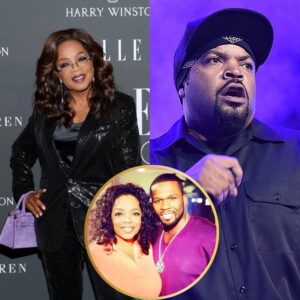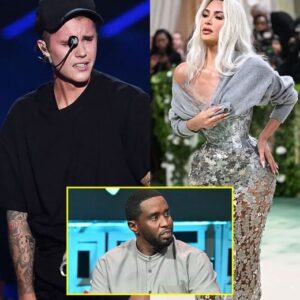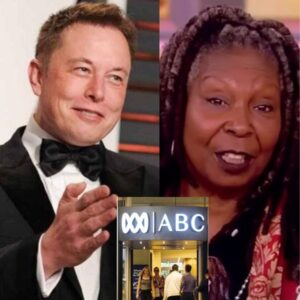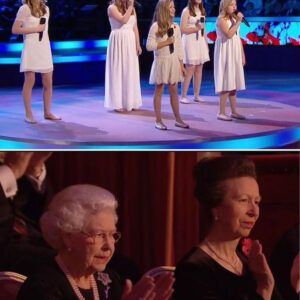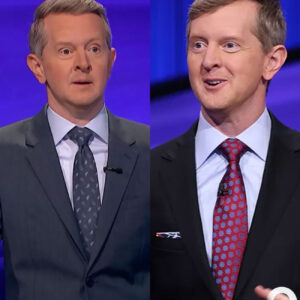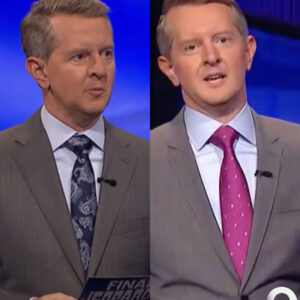“The ideas are my favorite part of everything I do. That moment where you’re like, ‘Oh, I know what it’s called,’ or ‘I know what the hook is now.’ ”
Taylor Swift mused about her creative process upon the release of her 2020 documentary, Miss Americana.
“I remember when I used to get an idea when I was 12 years old in my room,” Swift continued. “I used to get an idea and I’d be like, ‘Yes, idea!’ And then I’d get this fear and almost sorrow that no one was ever going to hear it. ‘I’m never going to get to make this into something. It’s just mine.’
“There’s something cute about that … but I want to make something.”
Swift has tallied 263 hits on the Billboard Hot 100, including 164 top 40 entries and 59 top 10s (all of which she has written or co-written, and the bulk of which she has co-produced) – all the most among women in the chart’s history (through the survey dated May 4, 2024). Of those, 12 have hit No. 1.
After arriving on the Hot 100 dated Sept. 23, 2006, with her debut single, “Tim McGraw,” Swift first reached the top 10 on the chart dated Aug. 30, 2008, with “Change”; five weeks later, she returned to the region with “Love Story,” with both songs from her sophomore album, Fearless. In 2022, she became the first artist to infuse the Hot 100’s entire top 10 in a single week with 10 tracks from her album Midnights.
On charts dated May 4, 2024, Swift earned her latest chart achievements with the arrival of her album The Tortured Poets Department at No. 1 on the Billboard 200 and its single “Fortnight,” featuring Post Malone, atop the Hot 100, with, in a Hot 100 first, Swift claiming the chart’s top 14 positions.
How has Swift’s songwriting and production evolved over the decade-and-a-half-plus since she first hit the Hot 100’s top 10? What stands out as unique in her craft? And, what techniques has she employed that have helped make her The Eras Tour groundbreaking?
Hit Songs Deconstructed, which provides compositional analytics for top 10 Hot 100 hits, recently held a masterclass, studying Swift’s top 10s from Fearless through Midnights, followed by the April 2 release of its complimentary 93-page report, “The Taylor Swift Evolution.”
Via insights from David Penn, who co-founded Hit Songs Deconstructed with Yael Penn, here is a look at 13 secrets to Swift’s historic Hot 100 success.
Billboard: Are there any main differences in Swift’s songwriting or production between the earlier and more recent, well … eras of her career, and any notable similarities?
Penn: When it comes to production, shifts across albums have been both subtle and notable. Early on, her move from country, pop and rock influences to full-blown mainstream pop happened gradually, which also helped avoid alienating her core fanbase.
The perfect balance of old and new was most evident on 2012’s Red. However, as time went on, the shifts became more pronounced, especially across Reputation, Lover, Folklore and Evermore. This evolution worked because the OG Swifties were in it for the long haul, and she was gaining a whole new set of fans with each album, thanks to her changing styles, sounds, vibes and personas. It’s kind of like taking a page out of the David Bowie playbook.
Another big change is in her use of guitars, both electric and acoustic. They were a defining feature of Swift’s early music, but started to fade after Red, except for the hits from Folklore and Evermore, which leaned more towards singer-songwriter and folk styles.

Then there are some techniques that were once part of her signature sound but have since been dropped, possibly to avoid becoming too predictable or due to stylistic irrelevancy. A prime example is what we at Hit Songs Deconstructed call the S.I.A. technique: section impact accentuator. This is where parts or all the instrumentation are pulled from the mix to spotlight a hook, often at the end of a chorus. While this is a staple of Swift’s early sound, it became less frequent as time went on. You can really hear it in “Love Story,” “…Ready for It?” and “Lover,” among other songs.

One aspect of Swift’s songwriting that has remained consistent throughout her career is the incorporation of love and relationship-themed lyrics. Virtually every song in her collection of Hot 100 top 10 hits revolves around the theme. As with developments in her own life, her songs vary between being in love and love lost. On Fearless and Speak Now, the emphasis was predominantly on being in love, whereas Red introduced themes of love lost. Since then, the focus has shifted across albums.
Has Swift’s songwriting and production evolved largely in line with Hot 100 trends? Of course, she’s part of setting trends, given all her hits.
Certain aspects of Swift’s songwriting and production have been in tune with mainstream trends. For instance, stylistically, 2017’s “I Don’t Wanna Live Forever (Fifty Shades Darker),” with Zayn, capitalized on the peak popularity of snaps in the Hot 100’s top 10, which were present in other diverse hits such as the No. 1s “Closer” by The Chainsmokers and Halsey and “That’s What I Like” by Bruno Mars.
Also in 2017, “…Ready for It?” capitalized on the rising popularity of hip-hop as well as tropical, which was then peaking and present in other notable hits such as “Shape of You” by Ed Sheeran and “Don’t Wanna Know” by Maroon 5.
A few other areas where she evolved with the times is her shift away from big, high-energy choruses; trimmed down song lengths; and lesser use of pre-choruses.
In such songs as 2020’s “Cardigan,” Swift spotlights the lower register in her voice. Has she relied on that more as her career has evolved?
Part of it has to do with maturing, for sure. But even more importantly, the register she sings in effectively reflects what the lyrics and vibe warrant. For instance, in “Cardigan,” her drop to a low register in Iines 2 and 4 of the verse, where she sings “when you are young they assume you know nothing,” jibes with and accentuates the negative tone of the lyric. However, her leap to a higher register in the first four lines of the chorus, along with her more animated delivery, conveys the passion and desire present in the lyrics in a compelling manner.

Also in “Cardigan,” Swift employs what actually sounds like “high heels on cobblestones,” mirroring the song’s lyrics. How conventional is that production technique in pop hits?
Using production techniques to amplify lyrical content and a song’s emotional impact is highly commonplace. From the ominous stuttering effect on the main hook in Billie Eilish’s “Bad Guy” to the starting car engine at the beginning of Olivia Rodrigo’s “Drivers License,” back to the thunder and church bell on Black Sabbath’s namesake song, these techniques have been used to great avail throughout the ages. However, within an artist’s body of work they are used more sparingly to avoid predictability and cliché.
In “Cardigan,” the “high heels on cobblestones” production quality is quite clever because it also serves a percussive element in lieu of drums, while accentuating the impact of the scene. Another notable example is the pen click in “Blank Space.” While the song title hook is impactful on its own, the addition of the pen click made it iconic: “But I’ve got a blank space, baby” … pen click … “And I’ll write your name.”
In “Exile,” Swift and Bon Iver’s Justin Vernon sing simultaneously – but countering lyrics. Especially poignantly, Vernon sings “‘Cause you never gave a warning sign,” while Swift rues “I gave so many signs.” Similar to “Summer Nights” from Grease, as listeners, we’re hearing both sides, while the singers seemingly are not. What do you make of that intricate lyrical structure?
That’s the brilliance of an effective duet, which goes far beyond simply showcasing artists but cleverly weaving them into the storyline to provide the narrative with heightened dimension and impact. Interestingly, duets are few and far between in Swift’s top 10 body of work.
“Me!,” featuring Brendon Urie, is another example of a highly effective duet, especially in the bridge – a song section that that Swift is widely known for – and the outro.
In the bridge, the artists trade lines in an engaging back-and-forth before harmonizing on the final lyric that expresses both character’s sentiments: “I promise that you’ll never find another like me.” In the outro, lines from the bridge and the chorus are cleverly intertwined to create a catchy grand-finale hookfest.
Outro stanza 1:
Bridge (Urie): Girl, there ain’t no I in “team”
Bridge (Swift): But you know there is a “me”
Chorus (duet): I’m the only one of me (Oh-oh)
Chorus (duet): Baby, that’s the fun of me
Outro stanza 2:
Bridge (Urie): Strike the band up, one, two, three
Bridge (Swift): You can’t spell “awesome” without “me”
Chorus (duet): You’re the only one of you
Chorus (duet): Baby, that’s the fun of you
Chorus (duet): And I promise that nobody’s gonna love you like me-ee-ee

The masterclass analyzed how Swift has adopted more poetic phrasing in her more recent releases. You contrasted similar themes in the direct title line in “We Are Never Ever Getting Back Together,” from 2012, with a deeper lyric in “Exile,” from 2020: “You are not my homeland anymore/ So what am I defending now?” Clearly, Swift’s audience has accepted such an evolution in her writing.
As Swift has matured and evolved, so has her lyricism. From Fearless through 1989, the majority of her top 10 hits leaned towards common and conversational lyricism, while from Reputation onwards, there’s been a greater incorporation of poetic elements. Concurrently, Swift’s original fanbase has grown up alongside her, evolving in both their lyrical and musical preferences, as well.

One important element to note, however, is that Swift’s songs don’t fully lean one way or the other. There is always some degree of balance to ensure that the storyline is intriguing yet easy to grasp. Two great examples on either end of the spectrum are “Jump Then Fall,” from 2009, and “Snow on the Beach,” from 2022.

Conversely, some of Swift’s most recent hits have what you refer to as “nonsense lyrics” – such as the line that she uses to essentially rhyme with the title lyric in “Cruel Summer.” Hit pop music can clearly be as much about a hummable hook as a carefully crafted lyric.
Absolutely. From The Rivingtons’ “Papa-Oom-Mow-Mow” to The Beatles’ “I Am the Walrus” to Swift’s “Cruel Summer” and beyond, nonsensical lyrics have been used in a ton of hits. However, there needs to be a rhyme and a reason for their use.
For instance, in addition to making a rhyme connection with the song title hook and heightening the chorus’ catchiness, the nonsense lyric “whoa” in “Cruel Summer” cleverly ties in with the chorus’ negative lyrical direction through the “woe” commonality. Had Swift instead used another highly common nonsense lyric like “nah-nah” or “hey-hey,” it wouldn’t have worked nearly as well.
You note that only 5% of Swift’s songs start with a chorus, which can hook listeners in immediately. What are any reasons that artists might not use that method more?
This stat isn’t unique to Swift. For instance, over the past decade, only 4% of the Hot 100’s top 10 has kicked off with the chorus. Two possible reasons are shrinking attention spans and the rise of streaming. If listeners get their fill of the catchiest part of the song and tune out before it gets to the 30-second mark, the song doesn’t count as a stream.
To counter this, some songs instead tease a fragment of the chorus or other hook in the intro to whet listeners’ appetite for its return and, thus, up their chances of remaining tuned in until they get it. A little over half of Swift’s Hot 100 top 10s from Fearless through Midnights introduce a key hook in the intro.
The masterclass cited that in “Love Story,” Swift uses the same chorus melody throughout, but the lyrics change, furthering the song’s narrative. How common is that among pop hits?
It’s not common at all and is one of the main areas where Swift really goes against the grain. Just over half of her hits from Fearless through Midnights feature choruses with differentiated lyrics. However, most balance the new lyrics with recycled material from previous choruses to maintain a degree of familiarity and ensure that the song’s main “hook center” gets firmly ingrained in the listener’s head.
Interestingly, she also goes against type with her pre-choruses, which are song sections that also commonly feature the same lyrics across iterations in pop songs. In Swift’s work, three-quarters of her hits feature changed-up pre-chorus lyrics.
Swift sports what you designate a “drop technique” in “I Knew You Were Trouble.,” in which the chorus feels less explosive than the verses. Is that a relatively more recent trait among pop hits, as opposed to prior decades?
The “drop technique” was a lot more common around a decade ago than it is now, when EDM-influenced hits such as “Don’t You Worry Child” by Swedish House Mafia were high on the Hot 100, alongside “I Knew You Were Trouble.” Essentially, the technique is where the chorus initially breaks down to a sparser, less energetic arrangement compared to the preceding section and then ramps up tension and anticipation culminating in a brief moment of silence that maximizes the arrival of a high-energy post-chorus.
Only a few of Swift’s top 10s feature a low-energy, breakdown chorus, with another being 2017’s “…Ready for It.” But in that case, the sparser, flowing, tropical vibe of the chorus was used to enhance the hookup-themed lyrics along with setting up the high-energy, abrasive “are you ready for it?” hook that directly follows.
Swift has been self-referential lyrically as far back as such songs as “Shake It Off” and “Blank Space,” among others. As with other elements noted above, how common is that trait in hit music?
Self-referential lyrics are highly common in hit music across genres, and for a number of reasons. An artist needs to be able to personally connect with lyrics to heighten their ability to deliver the song in a compelling and believable manner. If they don’t believe what they’re saying, the audience won’t either. Artist-centric lyrics can also create intrigue and heighten the listener’s engagement in the song. This has been a hallmark of Swift’s lyrics throughout her career, as many revolve around her own relationships and life events.
In addition, artist-centric lyrics almost always have an underlying universal, relatable subject matter, such as being in love, love lost and resilience. This enables the listener to personally connect with the song regardless of it being about the performing artist. The listener also comes away with a feeling of solidarity with the artist if they’re singing about something that they’re going through. This can strengthen the bond between them and up the chances of a listener being a lifelong fan.
In the masterclass, you also referred to “Swiftism”s, and that they were more prevalent earlier in her career (and have seemingly spun off similar effects used by artists including Billie Eilish and Olivia Rodrigo). What exactly are they? Plus, why might Swift have used them at all, and why less so now?
“Swiftism” is a term that I coined to describe a uniquely identifiable, embellishing vocal moment in a Swift hit. They range from a laugh and a quip to clever and impactful song title hooks, which are often spotlighted by a moment of instrumental silence.
The first “Swiftism” in a Hot 100 top 10 hit can be traced back to 2010’s “Speak Now,” but really came into full bloom in 2012’s “We Are Never Ever Getting Back Together.” The song features three of them: the spoken “what” at the end of the first stanza of verse 1; “like, ever” in the turnaround and bridge; and the laugh at the end of verse 2.

These “Swiftism”s, along with some of her more unique, iconic bridges in songs such as “Shake It Off,” “Look What You Made Me Do” and “Cruel Summer,” had their heyday from 1989 through Reputation. While they were components of her signature sound, she began to phase them out. One possible reason is that if she had continued using them, they would have likely become predictable and gimmicky and lose their impact. Another is that they didn’t mesh with her new, more mature stylistic directions on Folklore, Evermore and Midnights. Further, these qualities were incorporated into hits by next generation artists such as Eilish (“duh!”) and Rodrigo (the bridge in “Deja Vu”), so the technique wasn’t unique to Swift anymore.
Swift’s The Eras Tour has been trailblazing. Are there any key elements of her songwriting that lend themselves particularly well to a live setting?
Some of Swift’s hits include what we call A.P.M.s: audience participation moments. These are characteristics or moments in a song that are primed to get the audience singing, humming, clapping and/or stomping along with the performing artist in concert.
In “Cruel Summer,” for instance, Swift’s shouted lines at the end of each bridge stanza lend themselves perfectly to an A.P.M., along with conveying the emotion Swift feels towards her love interest.
However, at a Taylor Swift show, just about every aspect of a song becomes an A.P.M. in and of itself, with the audience singing and screaming back every word. That is the mark of a true superstar.
News
Ice Cube Exposes Oprah and Details Alleged Blackballing Tactics
Ice Cube Exposes Oprah and Details Alleged Blackballing Tactics Ice Cube DESTROYS Oprah & Reveals How She Blackballed Him Ice Cube’s recent disclosure about being sidelined from…
The Rock Reacts Explosively to Mel Gibson’s Oprah Secrets Leak | ‘Sound of Freedom’
The Rock Reacts Explosively to Mel Gibson’s Oprah Secrets Leak | ‘Sound of Freedom’ The Rock’s Explosive Reaction to Mel Gibson’s Oprah Secrets Leak | ‘Sound of…
The worrying signs Liam Payne’s life had spiralled out of control: Fans voiced fears over erratic red carpet display, shock hospitalisation, cancelled gigs and rambling videos
The worrying signs Liam Payne’s life had spiralled out of control: Fans voiced fears over erratic red carpet display, shock hospitalisation, cancelled gigs and rambling videos Liam…
Justin Bieber EXPOSES Kim Kardashian & Diddy’s
Justin Bieber EXPOSES Kim Kardashian & Diddy’s OMG ! Justin Bieber EXPOSES Being Kim Kardashian & Diddy’s 𝓼*𝔁-𝓽0𝔂 For 10 Years! (VIDEO) Shocking Allegations: Kim Kardashian and…
Elijah Wood BACKS Corey Feldman And WARNS Young Actors About Oprah
Elijah Wood BACKS Corey Feldman And WARNS Young Actors About Oprah The Hollywood industry has long been under scrutiny for its hidden secrets, and now, Elijah Wood…
Usher Officially Ends Diddy’s Career After Revealing This…
Usher OFFICIALLY ENDS Diddy’s Career After Revealing This… In a dramatic turn of events, Usher has emerged as a key player in what many are calling the…
End of content
No more pages to load
